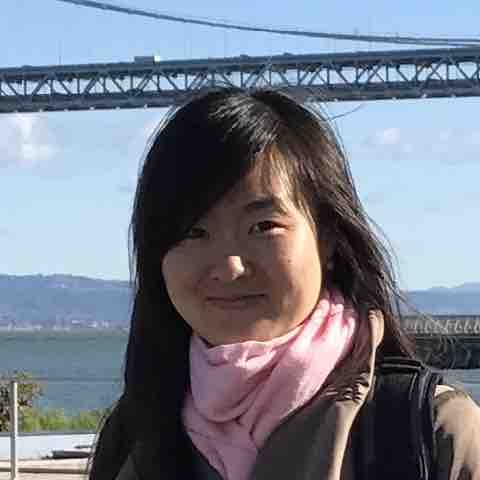Baylor Environmental Scientist Earns Research Support from NASA’s Early Career Investigator Program in Earth Science
Innovative research project from Yang Li, Ph.D., will study wildfire smoke while leveraging remote sensing observations in multi-scale modeling
Yang Li, Ph.D., assistant professor of environmental science at Baylor, leads students at G.W. Carver Middle School in Waco on a STEM Day experiment on air quality and human health. (Robert Rogers/Baylor University)
Contact: Lori Fogleman, Baylor University Media and Public Relations, 254-709-5959
Follow us on X (Twitter): @BaylorUMedia
WACO, Texas (March 14, 2024) – Yang Li, Ph.D., assistant professor of environmental science at Baylor University, has won a competitive NASA Early Career Investigator Program in Earth Science award that supports outstanding scientific research and career development of scientists and engineers at the early stage of their professional careers. She is the first faculty member in environmental science to receive this early career award.
Li’s innovative research project – Understanding Evolving Chemistry in Wildfire Smoke: Leveraging Remote Sensing Observations in Multi-Scale Modeling – aligns with NASA’s Earth Science Division priorities, including increasing the use of space-based remote sensing, integrating space-based remote sensing data with other datasets (e.g., surface, air) and into models and delivering actionable Earth science – making Earth science data more usable and impactful for the benefit of humanity.
“I was excited to learn that I received this award. I think this timely support from NASA will open more fire-related research opportunities in my lab, and our developed remote sensing products for the Pandonia Global Network will also benefit the atmospheric community globally,” Li said. “Also, I want to say this award greatly reflects the strong support from my department, college and university, which I really appreciate.”
Li described her research topic as “relevant, timely [and] significant” for understanding atmospheric composition and “forward-thinking” considering the increasing importance of wildfires with climate change. Her research will look at the intra- and inter-continental transport events of more frequent wildfire smoke that cause a pressing threat to public health by significantly enhancing ambient levels of smoke pollutants over downwind cities. The long-distance consequences of wildfire smoke could be further exacerbated according to climate change predictions, Li said. However, she noted a significant lack of understanding of how in-plume chemical reactions influence the composition of trace gases and aerosols along the transport processes, primarily due to insufficient measurements from current monitoring networks and lack of accurate modeling to represent the complex vertical structures of wildfire plumes.
“This research will leverage remote sensing observations to better constrain three-dimensional atmospheric modeling,” Li said. “This will allow us to use model results and products from ground networks to support validation of Tropospheric Emissions: Monitoring of POllution (TEMPO) observations by providing in-depth interpretation of evolving chemistry, UV aerosol observations and standard trace gas products, thereby enhancing the usage of TEMPO datasets to interpret air quality in the U.S. in the long term.”
A Ph.D. graduate of the University of Michigan, Li joined Baylor and the environmental science faculty from Harvard University, where she was a Postdoc Fellow working on MethaneSAT and MethaneAIR data analysis and science applications, with a focus on greenhouse gas flux inversion. Her other research projects at Harvard centered on using a coupled modeling framework to investigate the impacts of future changes in climate, vegetation and land use practices on dust mobilization and wildfire activity.
While at Michigan, Li applied and developed a large-eddy simulation model and regional chemical transport models to interpret the vertical distribution of biogenic volatile organic compounds. At Michigan, she also did a glacial project investigating the impact of aerosol deposition on snowmelt over the Greenland Ice Sheet. Li’s research interests span from local atmospheric chemistry modeling of trace gases and aerosols to global interpretation of climate and air quality co-benefits. At Baylor, she leads the Li Research Group, which offers research opportunities on air quality and climate for undergraduate and graduate students as well as postdoctoral researchers.
“Early Career Awards represent a clear indication that funding agencies see the significant long-term potential of researchers,” said George Cobb, Ph.D., professor and chair of environmental science. “Dr. Li’s NASA award is a first for the Environmental Science Department at Baylor University and should serve as the foundation for many future research opportunities for Dr. Li, her students and her colleagues.”
ABOUT BAYLOR UNIVERSITY
Baylor University is a private Christian University and a nationally ranked Research 1 institution. The University provides a vibrant campus community for more than 20,000 students by blending interdisciplinary research with an international reputation for educational excellence and a faculty commitment to teaching and scholarship. Chartered in 1845 by the Republic of Texas through the efforts of Baptist pioneers, Baylor is the oldest continually operating University in Texas. Located in Waco, Baylor welcomes students from all 50 states and more than 100 countries to study a broad range of degrees among its 12 nationally recognized academic divisions.
ABOUT THE COLLEGE OF ARTS & SCIENCES AT BAYLOR UNIVERSITY
The College of Arts & Sciences is Baylor University’s largest academic division, consisting of 25 academic departments in the sciences, humanities, fine arts and social sciences, as well as 11 academic centers and institutes. The more than 5,000 courses taught in the College span topics from art and theatre to religion, philosophy, sociology and the natural sciences. The College’s undergraduate Unified Core Curriculum, which routinely receives top grades in national assessments, emphasizes a liberal education characterized by critical thinking, communication, civic engagement and Christian commitment. Arts & Sciences faculty conduct research around the world, and research on the undergraduate and graduate level is prevalent throughout all disciplines. Visit the College of Arts & Sciences website.
